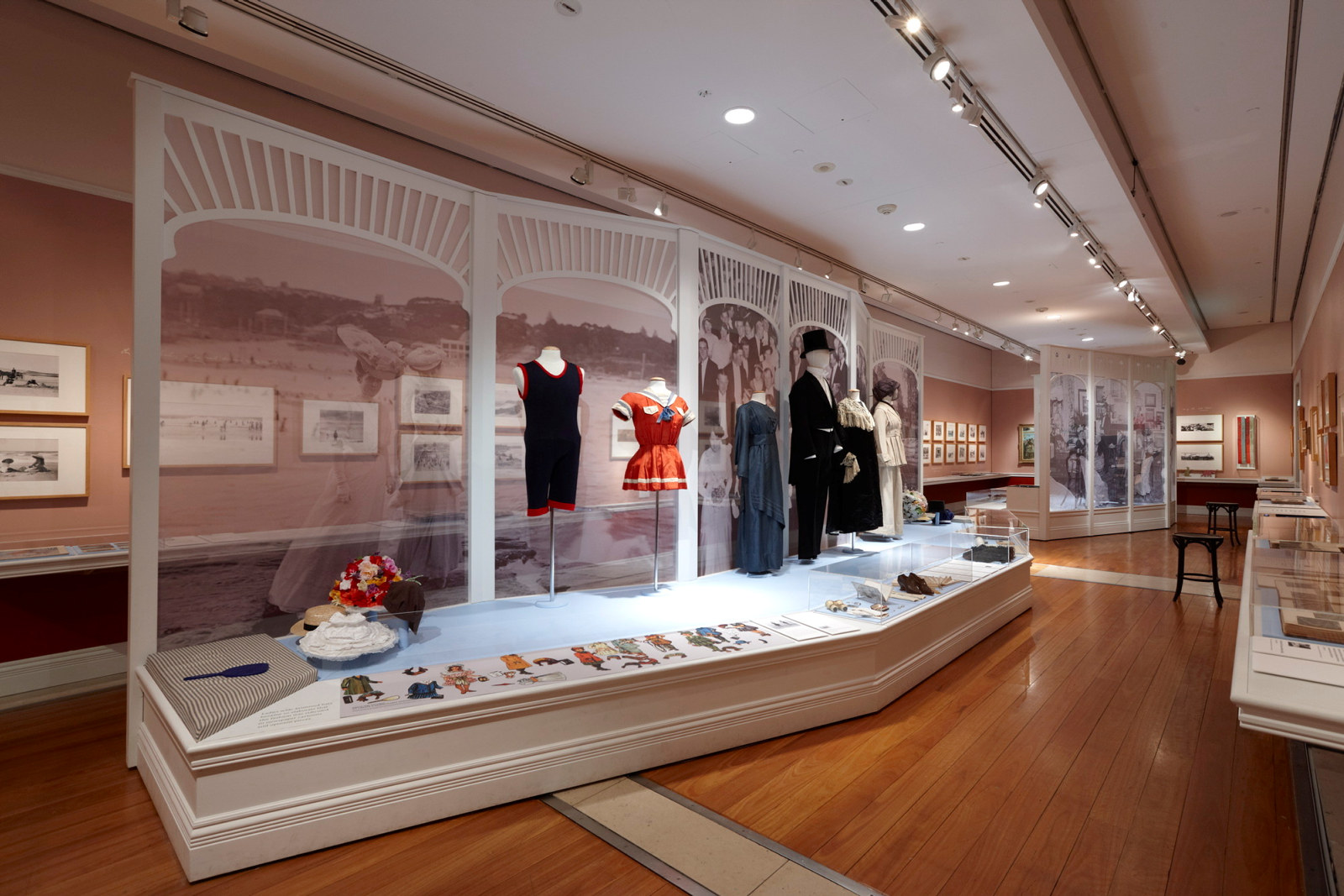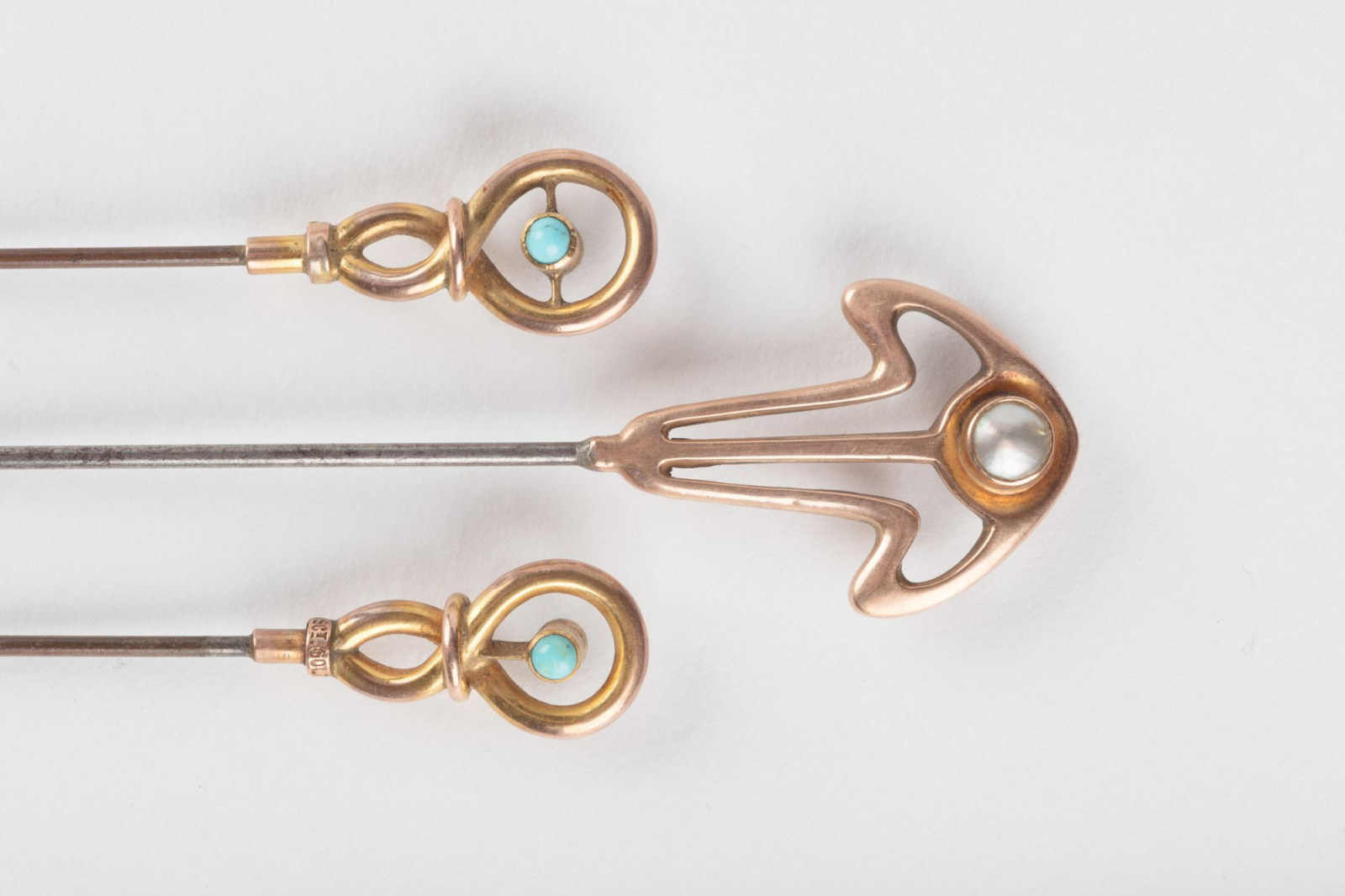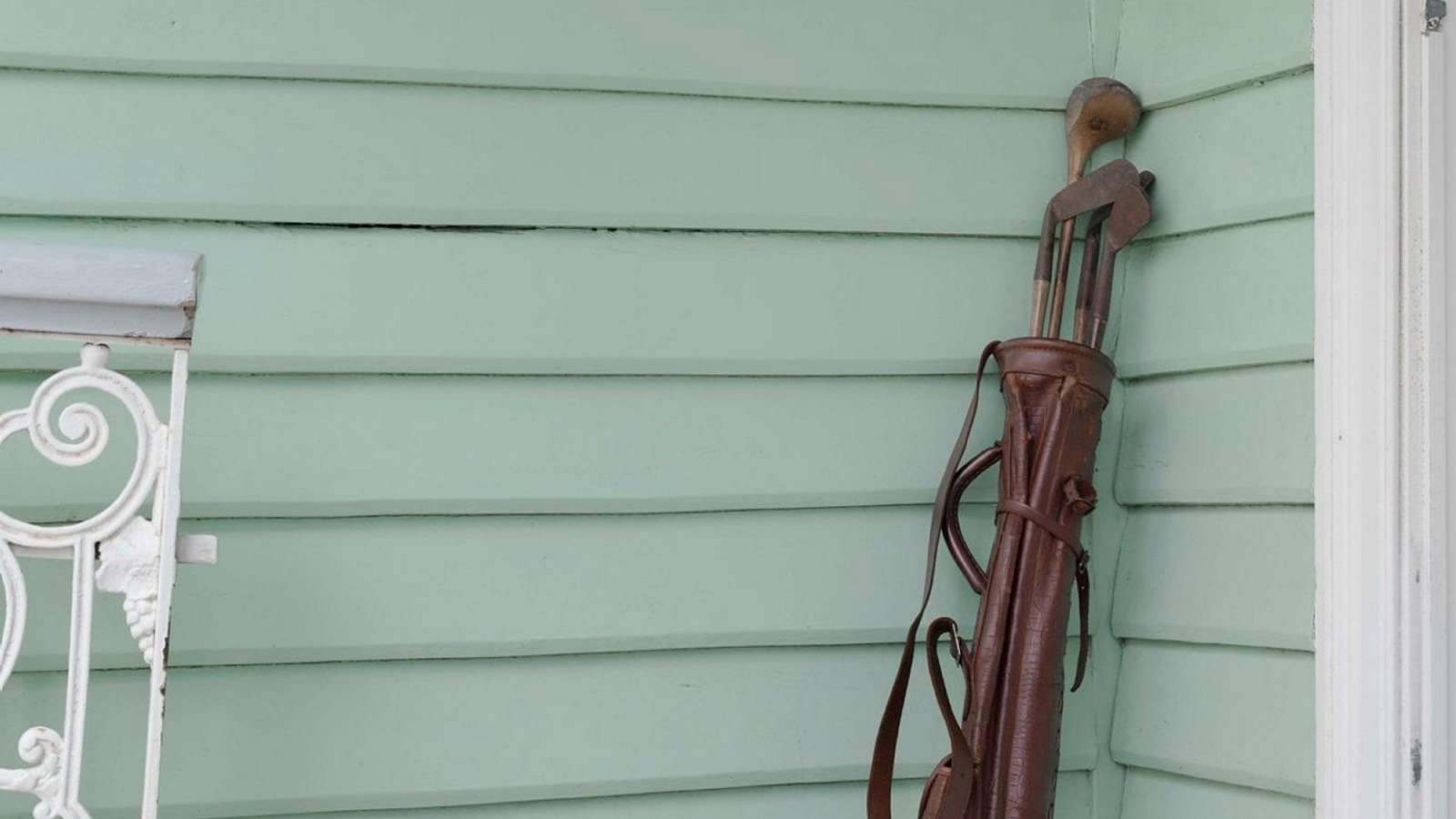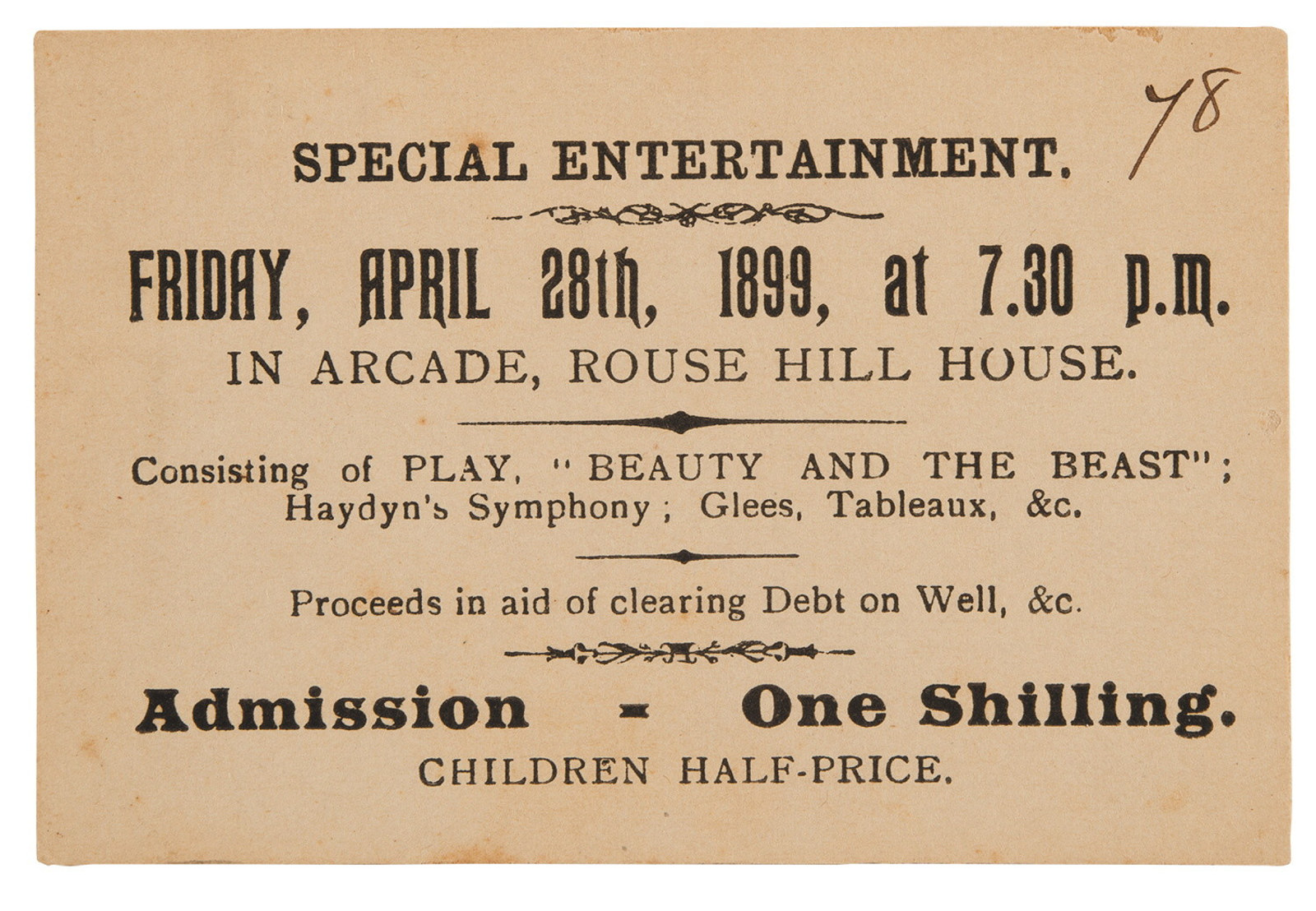An Edwardian Summer: Sydney through the lens of Arthur Wigram Allen
Sydney lawyer and identity Arthur Wigram Allen, a tirelessly enthusiastic photographer, was fascinated by the social and technological changes occurring during his lifetime. His talent for amateur photography produced extraordinary pictures that offer a fresh insight into the Edwardian years in Sydney.
Sandwiched between the great achievements of the Victorian age and the global catastrophe of World War I, the Edwardian era heralded a new century of significant inventions and social changes, including powered flight, the rise of the motorcar and a new federated Australia.
Arthur Wigram Allen
Arthur Wigram Allen was born in 1862 into a large family of wealthy Sydney solicitors. One of 11 children and third in a line of six boys he attended Sydney Grammar School before moving to Melbourne in 1880 to study law at Trinity College at the University of Melbourne. In 1885 after the sudden death of his two elder brothers Arthur assumed control of the familíes Sydney firm and many business interests.
Allen married Ethel Lamb in 1891 and they went on to have four children: Ethel Joyce, born in 1893, Arthur Denis Wigram in 1894, Ellice Margaret in 1896 and Marcia Maria in 1905.
Fascinated by the new inventions of the era, he became interested in photography, purchasing the latest cameras. He soon proved to be a talented amateur photographer, capturing images of his family and friends, the city and its surrounds.
Arthur died in 1941, aged 79; his photographs, taken from the 1890s through to 1934, provide a detailed photographic record of a changing society and the emergence of the great city of Sydney.
A man of extraordinary vitality, Allen was fascinated by the times in which he lived, and tried to photograph everything he saw: family and friends; visiting ships and theatrical celebrities; bush picnics; the first mixed bathing on Sydney beaches; dramatic shipwrecks; processions, pageants and mass celebrations; coal miners; domestic life and fashion; house interiors; and sporting events. These photographs, contained in 51 albums, are now held by the Mitchell Library, State Library of New South Wales, and provide a view of the dramatic changes that took place in Edwardian Sydney.
Arthur Allen's photographs span 1890 to 1934, but the Edwardian Summer exhibition and book concentrate on those depicting the Edwardian years, a brief, often-overlooked but important period in Australia's history. The photographs, most of them never published before, form an unrivalled personal pictorial record of these rapidly changing times.
A most unique page. I think it is the only picture in my books in which I appear and I hope it will be the last ...
Arthur Wigram Allan
Sydney at the dawn of the Edwardian era
The death of Queen Victoria in January 1901 and the succession of her son Edward to the throne marked the beginning of the Edwardian era and coincided with Australia’s becoming a federated nation.
On Federation Day, 1 January 1901, the official ceremony for the swearing-in of Australia’s first Commonwealth ministry and first Governor-General took place in Centennial Park. A white domed ceremonial pavilion had been built for the occasion in the middle of the park; there was seating for 7500 official guests, who were surrounded by thousands of spectators, including more than 10,000 troops. In similar events all over the new nation, the Australian people turned out in their hundreds of thousands to celebrate.
A rapidly increasing population had led to the spread of new subdivisions, from the south-east through Alexandria to Botany and Brighton, west to Ashfield and Burwood, and north to Chatswood and St Leonards. The new suburbs were supported by an ever-expanding network of public transport, with Circular Quay and Central Railway as its hubs. It would be a few more years before the motorcar took over the city and suburbs.
By Federation, Sydney was the largest city of the new Australian Commonwealth and the fifth-largest port in the British Empire. It had grown from a colonial outpost of narrow cobbled streets to a bustling mercantile town of thriving industries and booming trade, with all the prerequisites of a modern city entering an era of great expansion.
Family and friends
Arthur Allen spent many hours recording his home life and outings with family and friends. The Allens’ circle comprised a large extended family and a close-knit group of friends, who came and went as they liked and were always welcome at the various Allen households. They often stayed at the Allens’ properties on the coast and in country New South Wales, as did visiting celebrities, particularly those from the theatre.
While the social and legal status of Australian women improved toward the end of the 19th century, the Allen girls, their cousins and a small group of friends were still taught by governesses. This in turn helped to foster close ties between the members of their social class.
Sydney society among the wealthy classes was like a big, familiar club of relatives and friends, with a continual round of visiting, parties and picnics that also included, for example, visiting naval officers. There were also lively, large-scale social events organised to coincide with special occasions, such as the visit of the Duke of York in 1901, and charity fundraisers for causes in Australia and abroad, including annual Red Cross charity balls and local functions to support soldiers serving in the war.
Arthur Allen owned many cars but drove only one type – Detroit Electric broughams, one of which is now in the Powerhouse Museum, Sydney. Its batteries needed charging every 60 kilometres, but the recharging device was formidable. Margaret described it as:
a terrifying machine, and I never lost my fear of it. One stood on a rubber mat, and twiddled two knobs on the switch board. At the back of this was a large glass valve or tube, bigger than a football and with an alarming hiss, this sprang to life and was filled with a dancing blue light. The car remained on charge all night, and was ready for the road in the morning.
Margaret Gifford, I can hear the horses, Methuen-Haynes, Sydney, 1983
Group entertained at Grantham in Potts Point, August 27, 1911. A magnificent international opera season was held at Her Majesty’s Theatre, Sydney, in late 1911. The star, Dame Nellie Melba, was supported by New York-born Countess Eleonora de Cisneros, Polish soprano Madam Janina Korolewicz- Wayda, Signor Zeni and Mademoiselle Ranzenburg. The group was entertained at Grantham in Potts Point. Allen was a major shareholder of the J C Williamson company, which had partnered with Melba in 1911, and the Allen family enjoyed many theatre outings and social events with the performers. The theatre women’s loose, low-waisted outfits are distinctly avant garde compared with those of the Sydney women.
- 1. Caroline Mackaness (ed.), An Edwardian Summer: Sydney and Beyond through the Lens of Arthur Wigram Allen, Historic Houses Trust, Sydney, 2010
Childhood
The four Allen children had a happy home life. Their somewhat reserved Victorian mother was balanced by their gregarious father, and as in many affluent families of the era they had numerous domestic helpers, including a nurse, Florence, who remained with the family until the children were almost grown.
The family enjoyed many excursions to local Sydney attractions as well as seaside visits, picnics and journeys further afield, including to their beach property at Port Hacking. The children celebrated birthdays with elaborate parties and were dressed in the latest fashions, which were still very much influenced by Britain. Little girls had to contend with layers of petticoats, profuse frills and, during the 1890s and 1900s, increasingly wide-brimmed hats; and neither boys nor girls could be seen in public without hats, gloves, coats and shoes.
Public education in New South Wales, established in the 1860s, also grew steadily towards the century’s end. The three Allen girls, however, like many children from wealthier families, were tutored at home by a governess. The only boy, Denis, attended a private boarding school and was then sent to England to complete his schooling.
[This photograph was] taken at half past 7 this morning. I tried to get as many of Marcia’s presents as possible on to the little balcony outside her bedroom. She was very lucky in getting so many things besides her stocking, and she had a very happy day
As early as 1842 dolls’ houses were offered for sale at Christmas in an advertisement in the Sydney Gazette. From the early 1800s toys of all kinds were imported to Australia, and in Melbourne in 1879 an Inter-colonial Juvenile Industrial Exhibition included three-roomed dolls’ houses with furniture. As well as the many imported dolls’ houses, local handcrafted versions were commonly created with whatever materials came to hand – often a kerosene tin or butter box decorated with remnant wall and floor coverings. They usually had a symmetrical façade that opened or a box back for access, and were commonly one room deep and one or two storeys high. They mirrored, in microcosm, the domestic life of their era. With three storeys, Joyce’s dolls’ house (opposite) was a grand example.
The beach
The pleasures of sea-bathing had been discouraged in colonial Sydney on the grounds of both risk and indecency, and early laws prohibited bathing during daylight hours. People gradually defied the daylight bathing laws and by 1900 there were reports in the press of whole families bathing. In 1902, a male swimmer at Manly Beach entered the water at midday. Although arrested, he was not charged, and by 1903 new laws were introduced that permitted surf bathing but required neck-to-knee outfits and prohibited the sexes to mingle. Mixed bathing soon followed, but swimming attire continued to be stringently regulated for some years to come.
Sydneysiders increasingly flocked to the coast to enjoy the cooling summer breezes and the glorious ocean views. The ‘pleasure palaces’ near many beaches provided popular entertainment for all ages. For picnics, families sought out Clark Island, quiet beaches around Middle Harbour or the popular Manly Beach.
Bondi and Coogee beaches in Sydney’s east were connected to the city by public transport and provided the ideal day-trip for large crowds of visitors. With growing numbers of people taking to the surf, the dangers of beach bathing became apparent, and in 1906 the first surf lifesaving club in the world was founded at Bondi Beach.
Ethel and I and Kitty & Katha took Joyce and Margaret for a drive this morning. Poor Denis was ill and unable to come with us. My big umbrella used as a sunshade
Coogee’s popularity as a weekend destination is evident in this crowded beach scene. Modelled on English seaside resorts, beaches such as Coogee sought to attract visitors by promoting the curative benefits of sea water and sea air and by building large amusement complexes. The Coogee Palace Aquarium opened in December 1887; The Sydney Morning Herald called it a ‘most exquisite addition to Sydney places of entertainment’. It had a magnificent octagonal dome and its interior was lavishly embellished with gold and silver stars and a rising sun and moon on a radiating blue background. Large refreshment rooms, a concert room, pleasure grounds, seal tanks and alligator ponds, roller-skating displays, circus acts and other performances provided attractions year round.
The bush
In the later 19th century, city dwellers’ attitudes to the Australian bush changed. Formerly a foreign wilderness, it now became a place of Arcadian bliss, offering something peculiarly Australian and very different from the more familiar urban landscapes.
Nationalism increased in the 1890s, and with it the Australian bush legend was born. Artists such as Tom Roberts and Frederick McCubbin created nostalgic bush scenes, depicting rural life as a simplistic and uniquely Australian ideal. Writers such as Banjo Paterson and Henry Lawson fashioned similar impressions in poetry and prose, strengthening the link between the bush and the Australian national identity.
By the early 1900s, the attributes of bush life were seen as an intrinsic part of the nation’s greatness. Bush characters were imbued with the same pioneering qualities as the diggers on the goldfields. By World War I these characteristics would be identified as uniquely Australian traits in our soldiers.
Expanded road and railway networks in the second half of the 19th century opened the bush to city visitors. Roads were cut to link sights of interest, and clear tracks were carved into the bush to allow access to vantage points. Swathes of descriptive tourist guides promoted the state’s many health, holiday and tourist resorts.
Arthur Allen. "We lunched at the fig tree not far from the Pass Road at the Bulli "B" pit." November 19, 1898.
Rex Walter and I went to day to Bulli mainly to see some land which had been offered to us to purchase but also to show Walter (Who had never been to Illawarra) the scenery. We lunched at the fig tree not far from the Pass Road at the Bulli "B" pit.
Renowned for its beauty, the Illawarra district was home to towering forests of turpentine and fig trees and tangled, dense stands of ferns and cabbage palms, tinted by the conspicuous red flowers of the Illawarra flame tree. Arthur Allen, his brother Walter and brother-in-law Rex travelled in a horsedrawn wagonette to Bulli, a small coal-mining town in the northern Illawarra, via the steep Bulli Pass road, which was built in 1867. The journey down the Bulli Pass afforded many spectacular views of the south coast.
Further afield
During the Edwardian era, touring became immensely popular. With the introduction of better working conditions and shorter working hours many people had more leisure time, and took every opportunity to enjoy it. Even before the arrival of the motorcar, a growing love of the outdoors led the people of Sydney to flock to beauty spots in the Blue Mountains and Southern Highlands. Rural and waterside retreats around Sydney were as popular then as they are now, and the Allen family and their friends spent many weekends and vacations at their holiday houses at Port Hacking and Burradoo in the Southern Highlands.
To escape the hectic and at times unhealthy city, Sydneysiders sought the more relaxed lifestyle offered in rural locations. People began to enjoy the physical pleasures of life outdoors and the benefits of sun and clean air, and this was reflected in the way they behaved and dressed away from the confines of the city.
People who lacked their own transport could still enjoy tourism via the ever-expanding railway network. For those with private carriages and later motorcars, the ability to travel was only limited by the condition of the roads. The coming of the motorcar changed both the physical development of Sydney and the way people spent their leisure time, as they toured ever further.
I had a beautiful drive to-day from Sydney to Wollongong & Mt Kembla. I left Harll in the car at 7:30 (a new boy driving as Langan was ill). Went through Sutherland, National Park & Waterfall, arrived at top of Bald Hill at 9:30...Arrived at Wollongong 60 miles from Sydney at 10:45 five minutes train in which were Dr Robertson & Mr J Vickery. We lunched at Finisters Hotel, then went up in the car to the Mt Kembla mine, 8 miles from Wollongong.
Reginald Allen surveying the district from Austinmer down to Wollongong, October 23, 1912.
Rex is AWA’s brother Reginald. Arthur Allen’s interests in real estate and the mining industry often took him south, travelling by car through the National Park and Waterfall and stopping to take in the view at Bald Hill, over Stanwell Park, and at other scenic spots along the route to Wollongong. The development of the Illawarra region and its towns began with the early industries of cedar-cutting, farming and dairying, followed by the coal industry. The spread of settlement was already established by the time of this photograph. Originally the area north of Wollongong was known as Bulli and North Bulli. The original Aboriginal name for the area was Bulla or Bulla Bulla, meaning ‘two mountains’ (Mt Kembla and Mt Keira).
Out and about
Edwardian Sydney offered entertainment for every taste. Apart from the large-scale parades, military displays and massed bands that accompanied public celebrations, annual events such as the Royal Easter Show and the Public Schools’ Amateur Athletics Association carnival drew crowds from all walks of life. Expanding tram and rail networks carried passengers to venues such as the Zoo (then at Moore Park), Sydney Stadium at Rushcutters Bay and the Glaciarium Skating Rink, which operated at Ultimo from 1907.
Among the more popular leisure activities was horse racing, with racecourses as far afield as Randwick, Canterbury, Moorefield and Warwick Farm. The annual amateur picnic race held at Bong Bong, near Moss Vale, was as popular with Sydneysiders as with locals.
The growth in international sporting competition also provided spectacles for large crowds. Due to Australia’s success in rowing, the world championship sculling contest was regularly held on the Parramatta River, while in 1909 the Davis Cup tennis tournament came to Rose Bay. Cricket, cycling, athletics and football were also popular, with the Sydney Cricket Ground a versatile venue.
The children’s first swim this summer. A lovely warm morning. Fairly high tide. They certainly did enjoy it. They get great pleasure out of the water-wings
In the early 1900s the Zoological Gardens, then situated at Moore Park, were a popular attraction. At holiday times, local newspapers reported large crowds enjoying ‘all kinds of animals too numerous to mention’[1] including an orang-utan, two polar bears, lions, tigers, pumas, hyenas, jackals and dingos. The two Indian elephants, Jumbo and Jessie, were a major drawcard, offering adults and children rides around the zoo. By 1909, when the Moore Park site proved inadequate, alternative grounds were sought. The new zoo at Taronga Park opened in 1916 and Jessie, one of the oldest and largest inhabitants, was walked down Anzac Parade to Circular Quay then transported across to Mosman on the vehicular ferry.
A day on the harbour
Sydney’s waterways were the focus of both industry and pleasure in the Edwardian era. From its colonial foundations Sydney Cove had developed as the hub of a trading port and working harbour with a strong shipbuilding industry and other maritime trades.
During the Edwardian years, full-rigged ships gradually disappeared from Sydney Harbour, and after the bubonic plague arrived in 1900, large areas of residential and commercial buildings around Darling Harbour, Millers Point and The Rocks were resumed by the government and rebuilt.
By the early 1900s Circular Quay was dominated by ferry wharves and served as an interchange for all the traffic – pedestrian and vehicular – between Sydney and the north shore. This was the heyday of the harbour ferry, with commuter craft dominating the waters during peak hour. On weekends, the ‘great picnic trade’ ferried Sydney’s multitudes to the harbour’s pleasure destinations, many of which were owned and operated by the ferry companies.
Other Sydneysiders preferred to spend a day on the water, enjoying a leisurely steamer excursion, messing about in a small boat or sailing a yacht. Sporting events provided a further form of entertainment, with annual yachting and rowing regattas held on the harbour.
H.M.S. Powerful left Sydney today to re-commission at Colombo. Captain Michell called a few of us on board the Pyramus to tea & view the flagship depart
Modern era begins
By the time of Edward VII’s death in 1910, a truly Australian attitude and perspective had begun to emerge. The Commonwealth expressed its new unity, wealth and ambitions in a series of grand projects, including an Australian Navy (1910) and the Transcontinental Railway (1912–17).
In the early years of the 20th century, petrol-driven vehicles became more common on Sydney’s streets, and the city had an extensive network of electric trams. In 1911 aeroplanes took to the skies. Silent movies became a popular entertainment. Both men and women adopted simpler, more practical clothes, reflecting a better appreciation of the Australian climate and lifestyle.
Abroad, tensions were building, as established nations around the world entered an arms race. The Great War (1914–18) completely changed the mood and tenor of Australian society, and realigned allegiances between nations. Huge numbers of young men enlisted for ‘King, Country and Australia’, and went overseas to an unknown destiny.
Australia after the Great War was a changed place. To pay the war debt income tax was introduced, and the 1920s were a time of disappointing economic growth and limited government initiatives. The Great Depression and World War II coloured the lives of the subsequent generation, for whom the Edwardian era must have seemed distant and glorious.
Australian troops marched through the streets this afternoon, and I took the following … from our office windows at Australasia Chambers.
This article draws on the exhibition and accompanying book, An Edwardian Summer that was on display at the Museum of Sydney between 11 December 2010 and 26 April 2011.
Notes
- Caroline Mackaness (ed.), An Edwardian Summer: Sydney and Beyond through the Lens of Arthur Wigram Allen, Historic Houses Trust, Sydney, 2010
Past exhibition

Past exhibition
An Edwardian Summer
Sydney lawyer and identity Arthur Wigram Allen, a tirelessly enthusiastic photographer, was fascinated by the social and technological changes occurring during his lifetime
Published on
Related

Forgotten objects – the hatpin
Rarely seen or used today, hatpins were once an essential item for the fashionable lady

In the cupboard, under the stairs: Meroogal and golf
Tucked away in the hall cupboard under the stairs at Meroogal is one of the house's 'unsung' gems: a set of four, hickory-shafted golf sticks

If these walls could talk: Rouse Hill House
On the evening of 28 April 1899 the first act of a concert held at Rouse Hill House finished with a song performed by the jovial host, Edwin Stephen Rouse